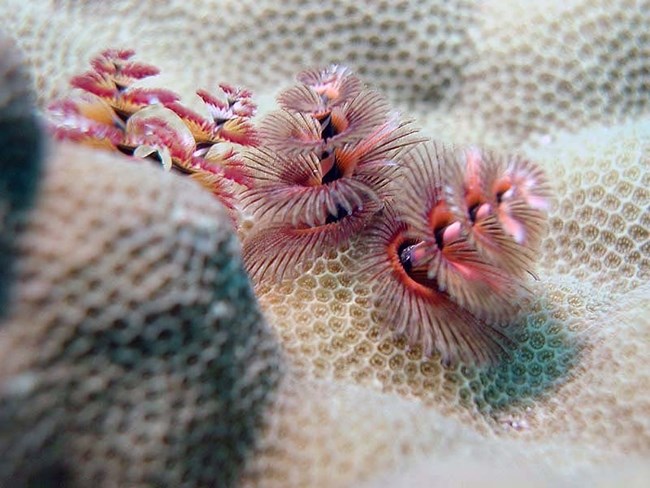Last updated: June 21, 2023
Article
Travel Blog: National Parks of the Pacific Islands
After researching the U.S. National Parks of the Pacific Islands, I was struck with the biodiversity, volcanic activity, and climate science that is unique to the area. In addition to the Hawai'i parks, NPS also has parks in Guam and the American Samoa. The geography, cultural and natural history of the Pacific Islands make them a must-see destination.
The sites that interested me most were Haleakala National Park (HALE) and the National Park of American Samoa (NPSA). I have added them to my national park bucket list, which grows as I learn more about the NPS Pacific West Region through my fellowship. The Pacific Islands inventory and monitoring program piqued my interest after watching and reading about it. Within this program, park scientists monitor the long-term health of the islands' ecosystems and take inventory of natural resources such as geology, soils, water, plant species, and vegetation.

Jonathan Irish, National Geographic
Haleakala National Park
The Hawaiian island of Maui is home to HALE. This mountain park features sub-tropical and volcanic landscapes. The park used to be a dormant volcano, Haleakala. At HALE they monitor land birds, plant communities, invasive plant species, climate, stream animals and water quality. A conservation project that I am interested in learning more about is the management response to the mosquito population in the park. In 2023, HALE, the state of Hawai'i, and other conservation organizations will embark on a campaign to reduce mosquito populations. Non-biting male mosquitos that are incapable of breeding will be released on Maui creating a mosquito birth control to give endangered forest birds a fighting chance against avian malaria.
If I ever visit this park, I will prioritize a hiking day trip. The path that fascinated me the most was the Keonehe‘ehe‘e (Sliding Sands) trail. This is an 11-mile full day hike with a 7,990ft-elevation gain. Some notable viewpoints are the crater floor, Pele’s Paint Pot, and Kawilinau. This alpine desert hike can feel like traveling back in time. Visitors can see the prevalent ‘āhinahina (Silversword), other small plants, ancient lava flows, and pu‘u (hills denoting old eruption sites) during the hikes.
NPSA is an island park located in the South Pacific. It has three volcanoes, a tropical rainforest, beaches, and a coral reef. I first learned about the American Samoa through an archeology class I took during my undergraduate career. NPSA is known for its archeological research. Within the park boundaries, there are archeological sites where park staff work with local experts to study the island's cultural and environmental history.

*Images credited to NPS without any copyright symbol are public domain.
The national parks of the Pacific Islands may be logistically harder to travel to but are worth the visit. The eight national parks range from rainforests, islands, deserts, and volcanoes. This region is home to rich cultural history that visitors are encouraged to learn more about. Some of the recreational activities that await you are exploring the tropical beaches, hiking, camping, and snorkeling. I used to dream of visiting Hawai’i and after watching the NPS videos and exploring their websites, I feel ready to book a trip. Click here to plan your visit today.
Travel Blog written by Abigail Stone Lauer
for "A Day in the Life of a Fellow" Article Series
National Park Service - Workforce Management Fellow
in Partnership with Northwest Youth Corps
